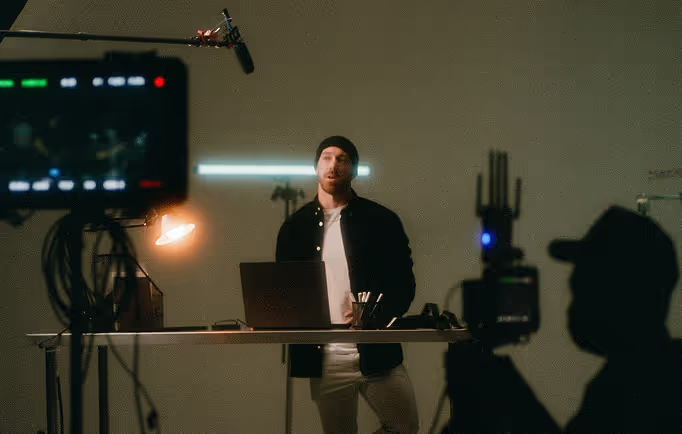How Explainer Videos Can Change Your Customers’ Habits For Good

If you want to make lasting, positive changes in your life, it’s comforting to keep in mind that tiny habits accumulate into big results a lot faster than you may think. If you improve at something by 1% each day, you become 37 times better after just one year (https://jamesclear.com/continuous-improvement). But even when we want to make positive change, it can be hard to stick to these habits in any kind of lasting way. In the recent bestseller Atomic Habits, author James Clear outlines how we can make habit building most effective with four laws of behaviour change: make it obvious, make it attractive, make it easy, and make it satisfying.
What’s true for our personal development is also true as consumers: the things we gravitate to are the things we make obvious, attractive, easy, and satisfying. As marketers, we make a clear path for purchase by presenting our message as an obvious, attractive, easy, and satisfying next step for the consumer. So how can we effectively hit all four laws of behaviour change with one advertising format? Well, I’m glad you asked:
1) explainer videos make it obvious
Explainer videos tend to follow a fairly predictable format – and I mean that in the best way possible. There’s a question that needs answering… and then it’s answered. In educational videos this question is curiosity-based (“Let me tell you a quick story about this strange and interesting phenomenon. Boy, isn’t it strange and interesting? Now the question is: why does this strange and interesting thing happen?”). Meanwhile in promotional videos this question is problem-based (“You have this problem in your life. How can you ever solve it and make your life better?”). In both instances the viewer is led to curiously, and obviously, await the answer. Even moreso, in the case of explainer videos for brands, the answer to the problems in the viewer’s life is invariably the product.
So why is it a good thing for explainer videos to make your message obvious? Because didactic instructions are designed to get stuck in your head. Like children’s books and nursery rhymes, there’s a level of fun in the anticipation of the obvious format, and a level of predictability that ingrains the message in our heads long after watching.
2) explainer videos make it attractive
When explainer videos exploded into popularity, countless articles started reporting the statistical benefits of using video over text for message retention. To list a few:
- Human eyes are attracted to movement, so we’re far more likely to gravitate toward a video ad than a static one – about 27.4 times more likely to be exact (https://www.mycustomer.com/marketing/technology/consumers-more-likely-to-click-online-video-ads)
- Our brains process visuals 60,000 times quicker than text, and 90% of the info that gets to our brain is visual (https://www.t-sciences.com/news/humans-process-visual-data-better)
- Watching video helps us retain around 95% of a message compared to 10% in text format (https://wavesmedia.com/video-vs-text-engagement-what-is-more-effective-and-why/)
- A call to action in a video produces around 380% more clicks than static options like text or buttons according to KISSmetrics analytics
- The non-verbal human cues in a video make the tone, context, and meaning of a message far easier to interpret accurately and effectively
- Likeliness of buying a product goes up 76% to 85% after watching a product video, depending on your demographics (https://www.marketingdive.com/news/study-85-of-millennials-have-purchased-a-product-after-watching-a-video/541594/)
There’s no doubt from these numbers: it’s a pleasure to watch videos, both for our eyes and for our brains. Visual media (especially audiovisual media like explainer videos) automatically make your message that much more attractive, and potentially change the course of your viewer’s buying habits and mental processing.
3) explainer videos make it easy
Explainer videos are structured to make the customer conversion process as easy as possible. The predictable problem and answer format described above is a good start for funnelling the customer down, placing them in a position where they understand the need your brand solves. The inherent attractiveness of the video format then helps that message stick positively in their mind. But regardless of whether a marketing video makes sense or looks good, if it doesn’t result in action then it’s failing to truly reach the customer and change their behaviour toward your brand.
That’s where the all important call-to-action makes it easy to jump from mere interest to brand conversion. It’s imperative that each explainer video ends with a clear, uncomplicated action for taking the next step, or else we risk wasting everyone’s time. Whether it’s making a phone call, downloading a free product trial, or clicking a link to purchase, the call to action acts as a bridge that makes it safe for the viewer to take the next step across to your brand.
4) explainer videos make it satisfying
According to Atomic Habits, “The first three laws of behavior change… increase the odds that a behavior will be performed this time. The fourth law of behavior change—make it satisfying—increases the odds that a behavior will be repeated next time.”
Our goal with crafting convincing explainer videos – whether for brands, events, causes, training, or educational purposes – is to create a lasting connection with the viewer. This is perhaps the hardest art of all to master when it comes to corporate video production: to fully convey the sense of life-betterment and community your message can bring, as opposed to just a momentary video distraction.
To do this, it’s important to make the audiovisual experience a true reflection of who your brand actually is. Working with images, sound, and animation, it’s a chance for repeated brand recall by appealing to different senses and brain areas with artistic choices that align with the mood and message you want to bring to the world. The more consistent, sincere, and well-rounded your brand image is, the more satisfied your target audience becomes with the brand experience, and the more likely they are to make a long-lasting connection with your brand.
Start a






